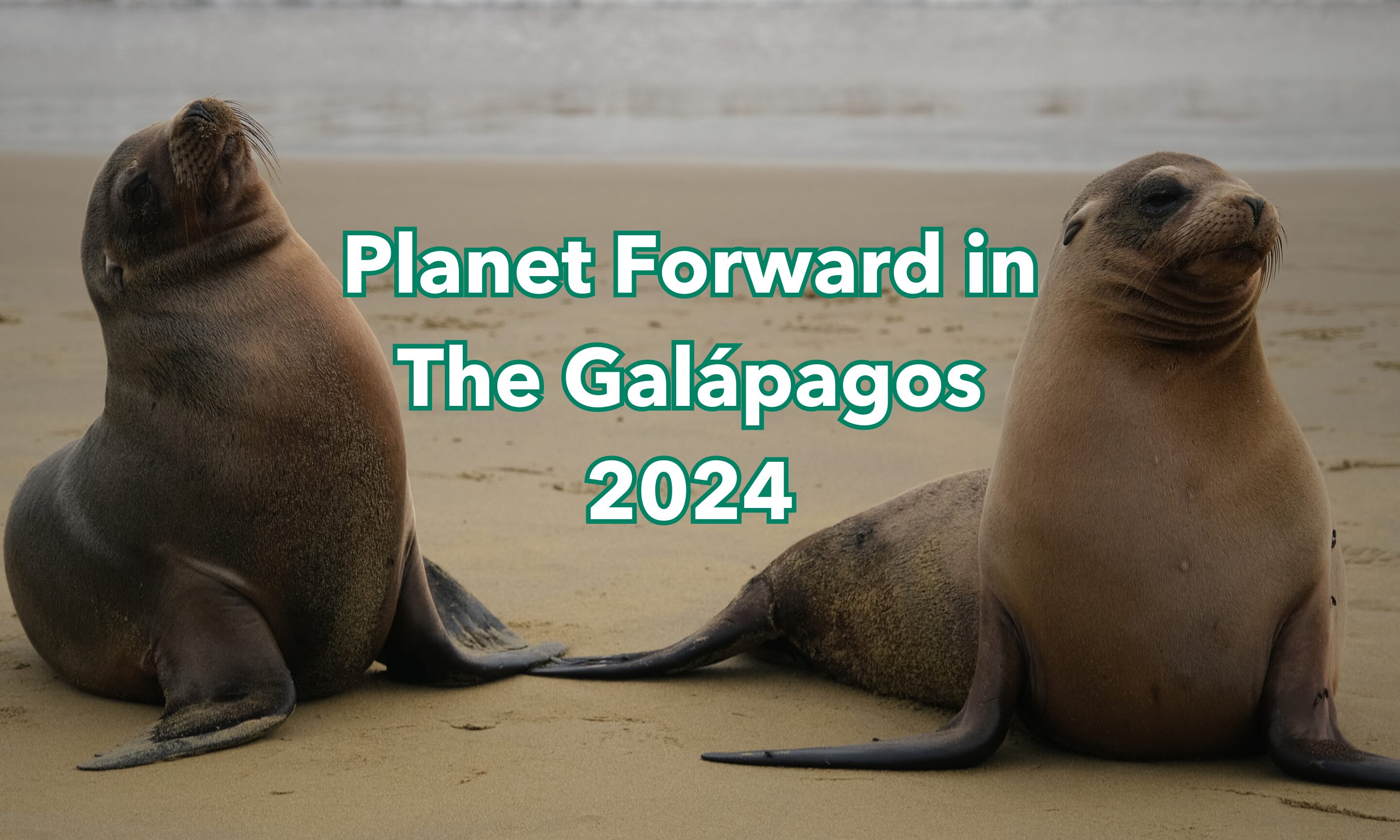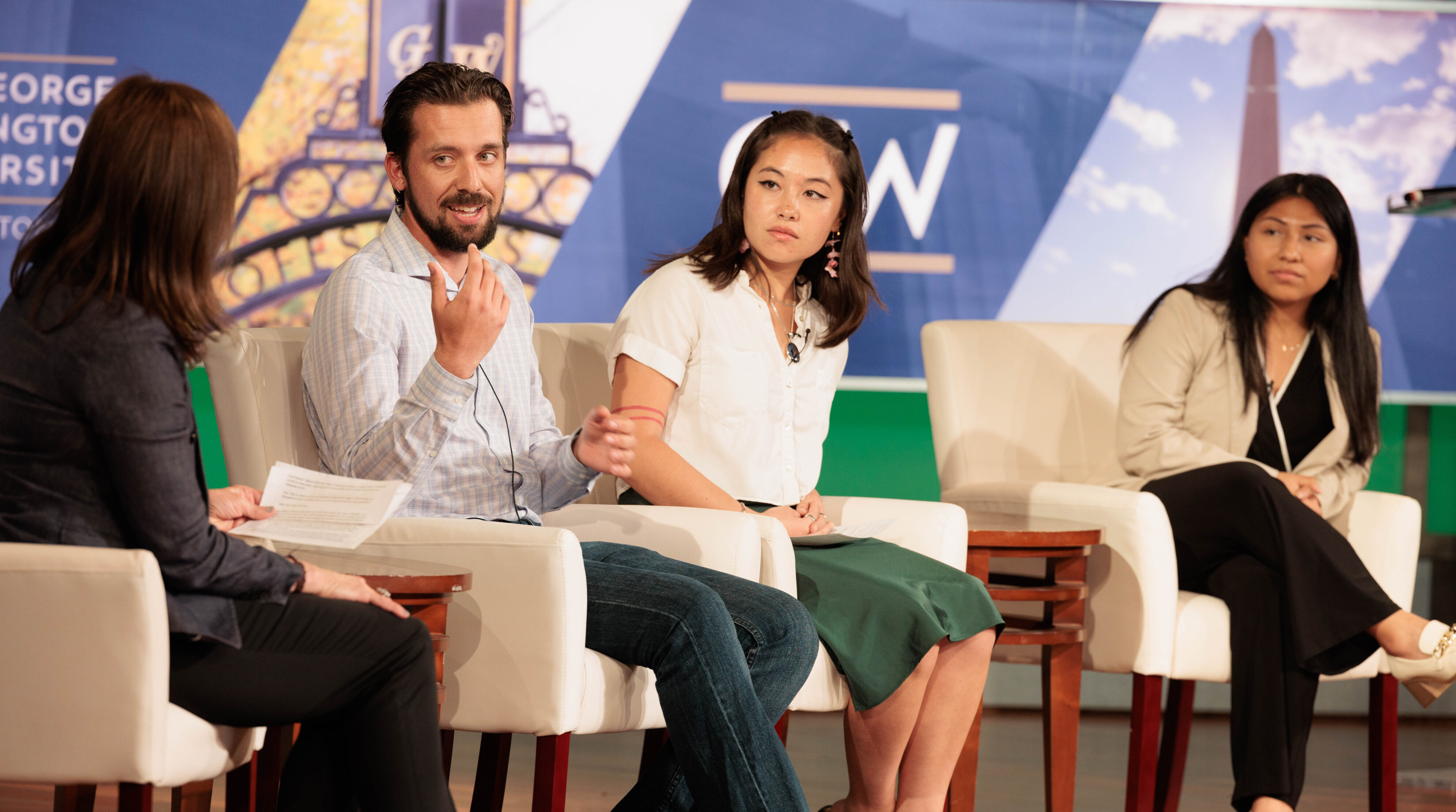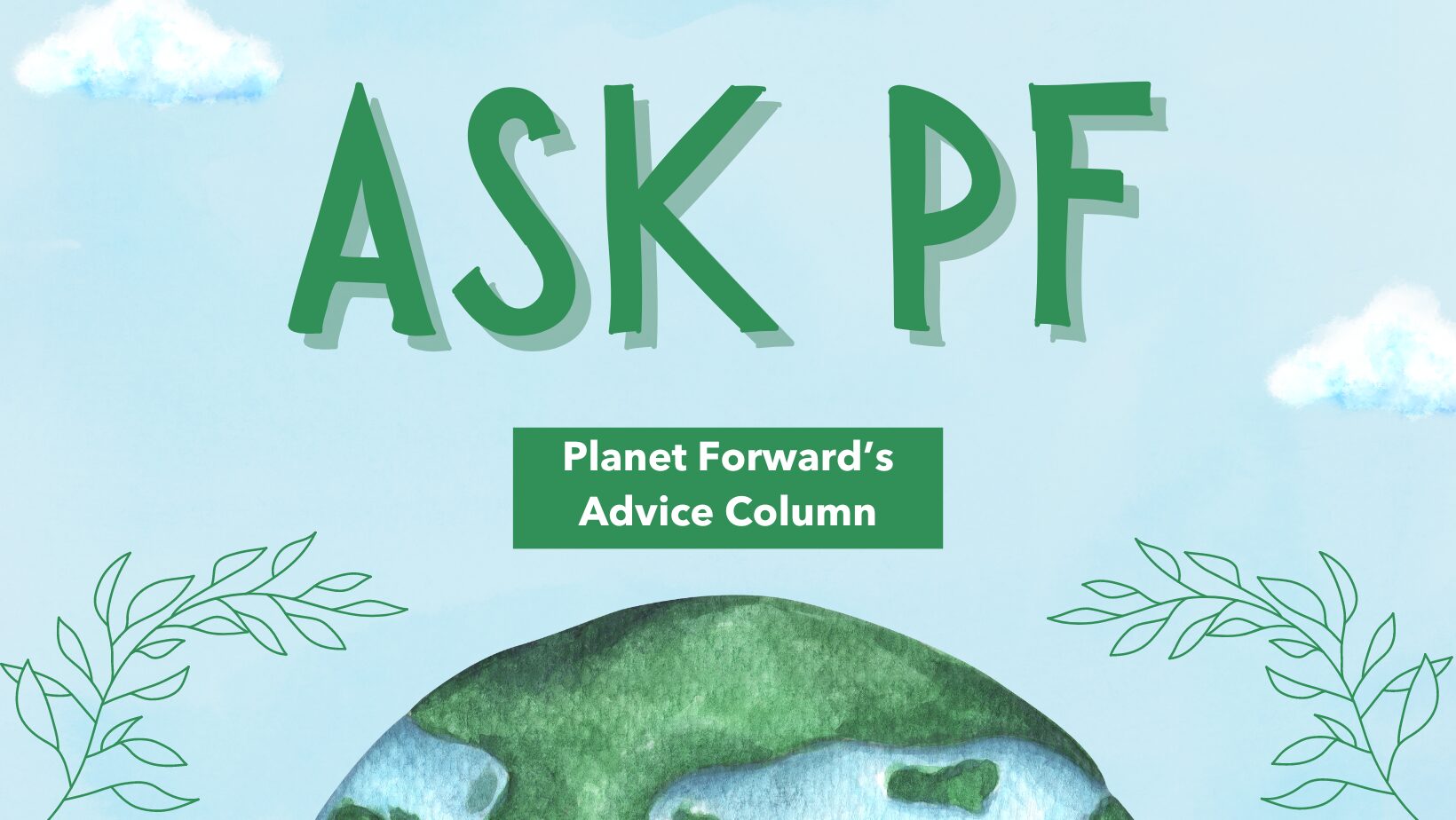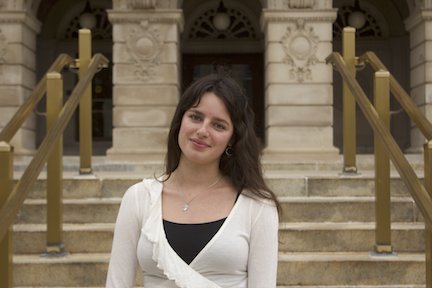
Covering climate change: The politicization of our changing world

I freeze — two middle-aged women in flowy bright skirts have asked my roommate and I to pose for a photo with their banner. My roommate, already holding a poster that reads “Believe Scientists,” enthusiastically says yes. I quickly swallow my hesitation and grab a corner of the “There is No Planet-B” sign as they snap the photo.
They thank us and we slip back into the crowd of protestors chanting in the shadow of the Madison Gas and Electric plant. That photo op won’t be the last time I overthink a seemingly easy decision on this hot afternoon, because today is The Global Climate Strike and I’m not attending it — I’m covering it.
As I march with the crowd from MG&E to the steps of the state capitol, it’s hard not to get swept up in the rousing speeches and impassioned chants, but I try to remember the journalistic guidelines I have been taught.
When I first started at The Badger Herald, one of the University of Wisconsin’s student newspapers, I was quickly taught the basics of unbiased journalism — speak to a representative from both sides, report only verifiable facts and do not post anything political to your social media. Many of these “journalism ethics” were then expanded upon and further instilled into me through my classes at UW.
At the strike, I stood next to my friends who waved large Crayola-lettered signs and chanted passionately. As I weaved through the sweaty crowd, I tried to establish my own journalistic guidelines on the fly — I could accept pamphlets but I couldn’t hold a sign, my friends could post pictures I was in but I couldn’t post one myself, I could clap but I couldn’t cheer.
Looking back, I was definitely overthinking things, but my self-imposed limitations do a raise a question many environmental journalists are constantly facing — what is our role in the fight against climate change?
It may seem obvious that as with other global debates, our job is to inform the public and report the facts. But with climate change, these “facts” are often more complicated than they appear.
Climate change first really came into the public sphere in 1988 when Dr. James Hansen of the National Aeronautics and Space Administration testified in front of a Congressional committee and said he was “99 percent certain” that the warming trend of the previous few years was not because of natural variation, but was caused by a buildup of carbon dioxide and other artificial gases in the atmosphere as a result of the burning of fossil fuels.
This story made the front page of the New York Times under the headline, “Global Warming has Begun, Expert tells Senate.” This article cited several scientists and mathematical models, all indicating that immediate action was needed. The piece included only one sentence acknowledging that some scientists believe the recent warmer temperatures are due to natural fluctuations.
Over 30 years later, the public’s perception of climate change has become increasingly divergent from the scientific discourse.
Ninety-seven percent of climate experts have concluded that human-caused climate change is a reality, according to the American Association for the Advancement of Science. But as of 2019, 35% of Americans think that global warming is generally exaggerated, up from 31% in 1997, according to a Gallup poll.This same poll found that as of 2018, only 42% of Americans would consider themselves an environmentalist, down from 76% in 1989.
I have seen how important this public perception of climate change can be in directing policy. One of my aforementioned Crayola sign-toting roommates is Marina Minic, a UW junior studying chemistry and environmental studies and an executive board member for Campus Leaders for Energy Action Now.
CLEAN is a student organization working through strikes and petitions to get UW to power the campus exclusively with renewable energy by 2050 and to derive all electrical power from renewable resources by 2030. I have covered several protests organized by CLEAN and have joined them during their weekly petitioning around campus, their version of Greta Thunberg’s Fridays for Future.
Minic said that most students she interacts with support clean energy; they are just unaware that it is such a major issue at UW. She said that whenever she tells students that only 1.61% of UW’s energy consumption comes from clean and renewable sources, they are disappointed and happy to sign CLEAN’s petition.
A major way CLEAN informs students and gains visibility is through media coverage, Minic told me.
“If the chancellor wakes up the next morning and she sees every local paper has written about something, obviously you can’t ignore it at that point,” Minic said. “It’s also a good way to raise awareness to other students to get involved in the movement because I think most people do care about this issue and maybe just didn’t know about it.”
This media attention has always been key for the environmental movement. However, in the years since Hansen first testified before the Senate, how the media covers climate change has shifted.
A study published in 2003 by the Global Environmental Change Journal featured a content analysis of articles published by The Wall Street Journal, The New York Times, The Washington Post and The Los Angeles Times from 1988 to 2002. The study found that the majority, 52.6%, of articles presented both the view that climate change is being caused by humans and the view that it is due to natural fluctuations, in a balanced way. The study also found that from 1988 to 2002, the articles’ focus on the need for immediate climate action decreased.
This study is dated, but more recent studies show similar trends. The day after the Intergovernmental Panel on Climate Change released its report announcing that global warming is likely to reach 1.5°C between 2030 and 2052 if current trends continue, Media Matters for America analyzed the home pages of the top 50 newspapers in the country. They found that only 22 covered the report.
This lack of coverage and the tendency to prioritize balance over accuracy may be connected to the politicization of climate change. A recent report published by the Science Communication Journal conducted a content analysis of all climate change-related articles published by major newspapers in the U.S between 1985 and 2017. The report found that representations of climate change have become more politicized.
The content analysis showed that political actors have been increasingly used as sources in recent years, while the use of scientists as sources has been decreasing. It also found that the mention of “Democrats” and “Republicans” in climate change-related articles have increased.
The perceived politicization of climate change has influenced actions being taken to address it. When 350 Madison, a climate action organization, petitioned The UW Foundation to divest from fossil fuel industries, the Foundation wrote a letter saying it did not want to do anything that would make the university be seen as a political actor, rather than an academic and research institution.
This argument is not unique to UW. Ari Bortman, a University of Pennsylvania junior and a campus organizer with Fossil Free Penn, told me that when Fossil Free pushed for divestment at UPenn, the administration said it did not want to make a political statement. That refusal, Bortman said, is a political statement in itself.
“At this point, their vehement resistance to make any kind of statement on the industry really belies their leanings,” Bortman said. “We know that the fossil fuel industry destroys people’s lives, destroys people’s homes for profit… Exxon admits to spending billions of dollars to spread false science to misinform people, that’s not debatable. To not say that these things are bad is a political statement.”
Bortman’s reference to Exxon Mobile’s misinformation campaigns actually touches on part of why climate change has become so politicized. A recent report, “America Misled,” analyzed internal corporate documents from the fossil fuel industry showing it knew about the reality of human-caused climate change for decades and actively funded denial and disinformation campaigns.
One document from 1998 outlines the American Petroleum Institute’s Global Climate Science Communications Plan. This plan includes a bullet point list titled, “Victory will be Achieved When.”
“Media “understands” (recognizes) uncertainties in climate science,” one bullet point read. “Media coverage reflects balance on climate science and recognition of the validity of viewpoints that challenge conventional wisdom.”
Corporations’ efforts to influence media messages about climate change have persisted throughout the years. One day in February, after covering CLEAN’s Divestment Die-in where protestors chanted and laid down at the top of Bascom Hill as a part of the national Fossil Fuel Divestment Day, I came home to find Marina fuming in the kitchen.
I had been covering the protest for The Badger Herald, but the other school newspaper, The Daily Cardinal, had been given a pamphlet from The UW Alumni Foundation emphasizing that technically it is the foundation that is invested in fossil fuels, not the university.
The resulting Daily Cardinal article said that students were protesting UW’s “alleged” investment in fossil fuels.
The word “alleged” was eventually removed after The Daily Cardinal met with CLEAN. In the meeting, CLEAN’s executive board explained that because all $124,785,961 the Foundation has invested in oil and gas is donated to UW, the university is still profiting off fossil fuel investments.
Seeing the importance media coverage plays in this issue, and the concerted effort those who profit from the fossil fuel industry have continued to put into influencing the media, makes me wonder — as a journalist, is it truly biased to take a stance on climate change? Furthermore, as a student with a platform, do I have a responsibility to share that stance?
I think back to The Global Climate Strike; standing on my tip toes with my arms outstretched trying to record the speakers, I remember how moved I was by what they said.
One speaker, UW freshman Crystal Zhao, reflected on her experience moving from China to Massachusetts at 14 and witnessing how climate change has affected different parts of the world. Her speech moved me because she discussed the importance of everyone having a role in the climate movement.
“I’m here today because I care about the future generation and selfishly, I am here today because I care about the reputation of our generation,” Zhao said. “I don’t want us to be remembered as the generation that failed to act when we still had a chance to save our home.”
Her speech brings me back to my original question: As a journalist, what is my role in the climate movement? This may be a question I continue to grapple with throughout my career. But I do know one thing — after Zhao spoke, I cheered as loud as I could.





















